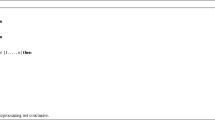Abstract.
Optimal solutions of interior point algorithms for linear and quadratic programming and linear complementarity problems provide maximally complementary solutions. Maximally complementary solutions can be characterized by optimal partitions. On the other hand, the solutions provided by simplex–based pivot algorithms are given in terms of complementary bases. A basis identification algorithm is an algorithm which generates a complementary basis, starting from any complementary solution. A partition identification algorithm is an algorithm which generates a maximally complementary solution (and its corresponding partition), starting from any complementary solution. In linear programming such algorithms were respectively proposed by Megiddo in 1991 and Balinski and Tucker in 1969. In this paper we will present identification algorithms for quadratic programming and linear complementarity problems with sufficient matrices. The presented algorithms are based on the principal pivot transform and the orthogonality property of basis tableaus.
Similar content being viewed by others
Author information
Authors and Affiliations
Additional information
Received April 9, 1996 / Revised version received April 27, 1998¶ Published online May 12, 1999
Rights and permissions
About this article
Cite this article
Berkelaar, A., Jansen, B., Roos, K. et al. Basis- and partition identification for quadratic programming and linear complementarity problems. Math. Program. 86, 261–282 (1999). https://doi.org/10.1007/s101070050089
Issue Date:
DOI: https://doi.org/10.1007/s101070050089



